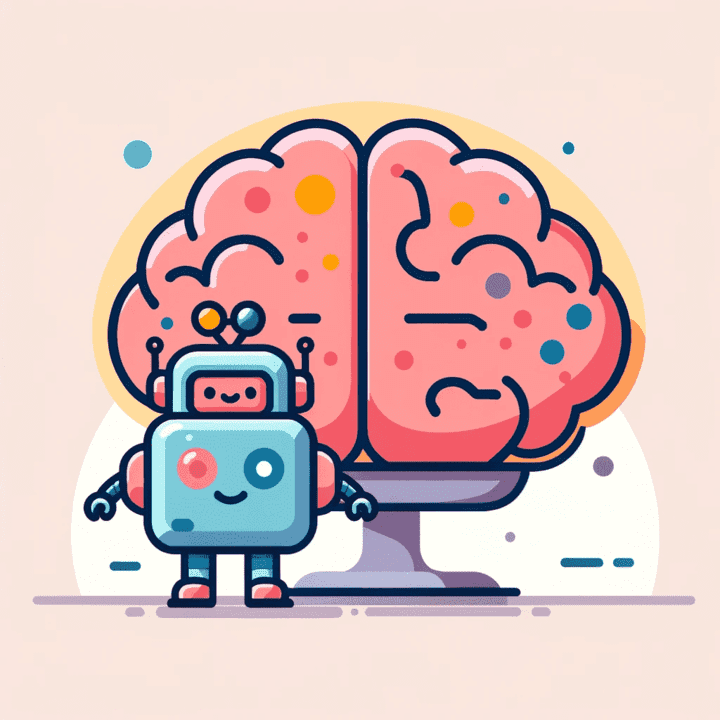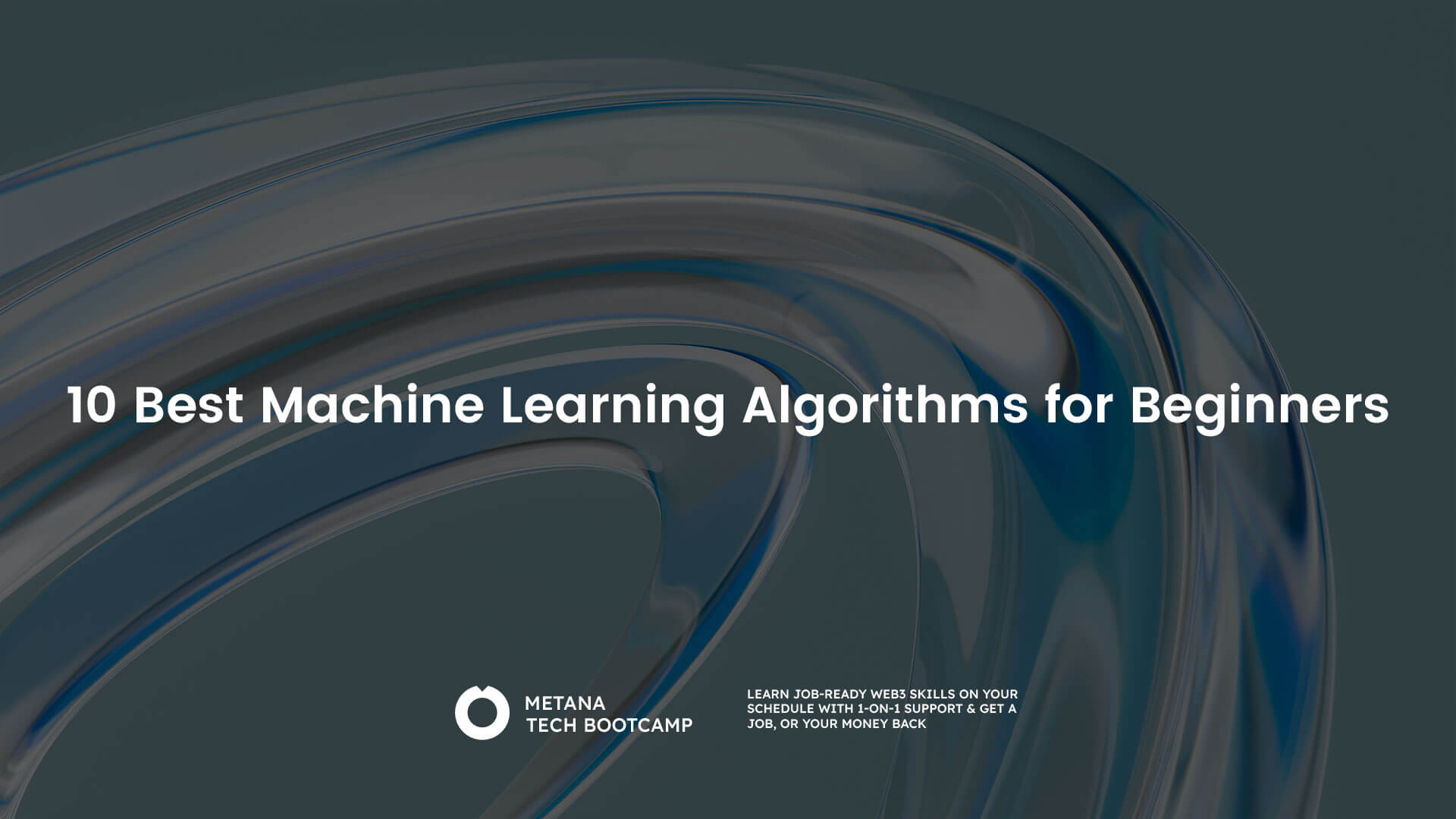Machine learning algorithms are at the heart of modern artificial intelligence (AI). These powerful tools teach machines to learn from data, spot patterns, and make decisions with little to no human help. They’re behind everything from smart personal assistants to advanced medical diagnoses. In this article, we’ll explore the various types of machine learning algorithms, how they’re used in real-world applications, the challenges in using them, and what the future might hold. Whether you’re new to AI or already familiar with the tech world, this guide will shed light on the fascinating world of machine learning.
Types of Machine Learning Algorithms
Machine learning algorithms, pivotal in advancing artificial intelligence, can be categorized into several key types, each suited for different data and tasks. Understanding these categories is essential for navigating the AI landscape.
- Supervised Learning: Here, the algorithm learns from labeled training data, predicting outcomes for new data based on previous examples. Examples include Linear Regression for continuous outcomes and Classification for discrete ones, used in applications like spam detection and housing price predictions.
- Unsupervised Learning: These algorithms work with unlabeled data, identifying patterns or groupings. Techniques like Clustering and Association fall under this category, ideal for exploratory data analysis, customer segmentation, and market analysis.
- Semi-Supervised Learning: This type combines elements of both supervised and unsupervised learning. It uses a small amount of labeled data alongside a larger pool of unlabeled data. This approach is beneficial when acquiring labeled data is costly or time-consuming. Semi-supervised learning is useful in scenarios where labeled data are limited, such as image and speech recognition tasks.
- Reinforcement Learning: In this approach, algorithms learn to make decisions through trial and error, receiving feedback from their own actions and experiences. It’s a key technique in gaming, navigation applications, and scenarios where a series of decisions lead to a specific goal.
Understanding the strengths and applications of each type of machine learning algorithm enables the development of powerful, efficient AI systems for a range of functions, from simple predictions to complex decision-making processes.
Popular Machine Learning Algorithms and Their Applications
Linear Regression
Linear Regression is a foundational algorithm in machine learning, primarily used for predicting a quantitative response. It’s based on the relationship between a dependent variable and one or more independent variables. By fitting a linear equation to observed data, Linear Regression allows for predicting future outcomes. For instance, in real estate, it can predict house prices based on features like size and location. The simplicity of Linear Regression makes it particularly useful for business forecasting, economics, and any field where trends over time are critical. Despite its simplicity, it requires careful treatment of outliers and a clear understanding of variables for accurate predictions.
Logistic Regression
Logistic Regression, despite its name, is used for classification problems, particularly binary classification. It estimates the probability that a given input point belongs to a certain class. For example, it can predict whether an email is spam or not. The output is a probability that ranges between 0 and 1, which is then mapped to two classes. It’s widely used in medical fields for disease diagnosis, such as predicting the likelihood of a patient having a particular disease, based on observed characteristics of the patient (like age, body weight, presence of certain symptoms, etc.).
Decision Trees
Decision Trees are versatile algorithms used for both classification and regression tasks. They model decisions as branching paths, where each node represents a feature, each branch represents a decision rule, and each leaf node represents an outcome. This structure makes them easy to understand and interpret. Decision Trees are particularly useful for complex datasets because they can model non-linear relationships. They are applied in various areas, including credit scoring, diagnosis in healthcare, and customer segmentation in marketing. However, they can become overly complex and overfit data, which is where techniques like pruning come into play.
Support Vector Machines (SVM)
SVMs are powerful algorithms used for both classification and regression but predominantly known for classification. They work well for high-dimensional spaces, like when classifying images or text. SVMs find the best boundary (or hyperplane) that separates data points of different classes. This boundary is chosen to maximize the margin between the data points of the two classes. SVMs are effective because they can handle nonlinear relationships through the use of kernels and are less prone to overfitting. They are used in applications like image classification, handwriting recognition, and biological classification.
Naive Bayes
Naive Bayes classifiers are a family of simple probabilistic classifiers based on applying Bayes’ theorem with strong (naive) independence assumptions between the features. They are fast and easy to implement, making them ideal for large datasets. Despite their simplicity, Naive Bayes classifiers can outperform more complex models when the independence assumption holds. This algorithm is commonly used in text classification tasks, such as spam filtering and sentiment analysis, as well as in medical diagnosis where it’s used to classify diseases based on symptoms.
K-Means Clustering
K-Means Clustering is an unsupervised learning algorithm that is used to group data into k distinct clusters based on their features. It’s particularly useful in situations where you need to find inherent patterns or groupings in the data, without pre-existing labels. The algorithm iteratively assigns each data point to one of K groups based on the feature similarity. It’s commonly applied in market research for customer segmentation, data compression, and pattern recognition. K-Means is simple and efficient but works best when the shape of clusters is hyper-spherical.
Random Forests
Random Forests are an ensemble learning method, which means they combine the predictions from multiple machine learning algorithms to make more accurate predictions than any individual model. A Random Forest aggregates many decision trees to limit overfitting as well as error due to bias and variance. It’s particularly renowned for its accuracy in classification problems. In finance, it’s used for credit scoring; in e-commerce, for predicting customer behavior; and in biology, for classifying species. Random Forests handle a large amount of data with higher dimensionality, but they require more computational resources and are less interpretable than individual decision trees.
Neural Networks
Neural Networks, inspired by the biological networks of the human brain, are at the forefront of many recent advances in AI. They consist of layers of interconnected nodes, and each node represents a mathematical operation. Neural networks learn to perform tasks by considering examples, generally without task-specific programming. They excel in complex tasks like image and speech recognition, natural language processing, and playing complex games like Go or Chess. The flexibility and power of neural networks come with a trade-off in terms of their need for large amounts of data and computational resources, and they are often seen as black boxes due to their complexity.
Gradient Boosting Machines (GBM)
Gradient Boosting Machines are a group of machine learning algorithms that combine many weak learning models together to create a strong predictive model. Decision trees are usually used when doing gradient boosting. GBM builds the model in a stage-wise fashion, and it generalizes them by allowing optimization of an arbitrary differentiable loss function. They are widely used in machine learning competitions and have practical applications in classification problems, like fraud detection and predictive analytics in fields ranging from finance to healthcare. While powerful, they can be prone to overfitting and require careful tuning of their parameters.
Principal Component Analysis (PCA)
PCA is a statistical procedure that uses an orthogonal transformation to convert a set of observations of possibly correlated variables into a set of linearly uncorrelated variables called principal components. This technique is used extensively in exploratory data analysis and for making predictive models. It’s especially useful in processing and visualizing genetic data, in neuroscience for pattern recognition and signal processing, and in finance for risk management and portfolio optimization. PCA helps in understanding the data structure and reducing the dimensionality of the data without much loss of information.
Reinforcement Learning
Reinforcement Learning is a type of machine learning algorithm where an agent learns to behave in an environment by performing certain actions and observing the rewards that result from those actions. It’s used in various applications where decision-making is sequential, and the goal is long-term, such as robotics for industrial automation, in gaming AI, and for real-time decisions in complex environments. Reinforcement Learning is particularly notable for its role in training deep learning models to play and often excel at various games, surpassing human performance in some cases.
Basic Concepts in Machine Learning
Data Sets (Training, Validation, Test)
In machine learning, data is the backbone that drives the learning process. Data sets are typically divided into three main types:
- Training Data Set: This is the largest portion of the data and is used to train the machine learning model. The model learns to make predictions or decisions based on this data.
- Validation Data Set: After the model is trained, it is tested on the validation data set. This data is used to fine-tune model parameters and select the best model. It acts as a checkpoint to ensure the model is learning correctly.
- Test Data Set: This is a separate set of data that the model has never seen during its training. It is used to evaluate the final performance of the model and provides an unbiased assessment of its effectiveness.
Features and Labels
- Features: These are the input variables of the data. In a dataset, features are the individual independent variables that act as the input in your system. For example, in a dataset for house price prediction, features could be the size of the house, the number of rooms, the age of the house, etc.
- Labels: Labels are the output variables that the model is trying to predict. Continuing with the house price prediction example, the label would be the price of the house.
Model Training and Testing
- Training: This is the process where the machine learning algorithm learns from the training data by adjusting its parameters (like weights in a neural network) to make accurate predictions or decisions.
- Testing: After training, the model is tested using the test data set to evaluate its performance. This step is crucial to determine how well the model generalizes to new, unseen data.
Overfitting and Underfitting
- Overfitting: This occurs when a model learns the training data too well, including its noise and outliers, and performs poorly on new data. It’s like memorizing the answers instead of understanding the concepts.
- Underfitting: Underfitting happens when a model is too simple to learn the underlying pattern of the data. This usually occurs if the model is not complex enough or is not trained sufficiently.
Balancing between overfitting and underfitting is crucial in machine learning to build models that generalize well to new, unseen data.

Choosing the Right Algorithm
Selecting the appropriate machine learning algorithm is a critical step in the development of a machine learning model. The choice of algorithm can significantly affect the performance and accuracy of the model. Several factors influence this decision:
Data Size, Quality, and Diversity
- Data Size: The amount of data you have can determine which algorithm will be most effective. Some algorithms, like deep learning neural networks, require large amounts of data to perform well, while others can work with smaller datasets.
- Data Quality: The cleanliness and structure of your data are crucial. Algorithms may vary in their sensitivity to missing data, noise, and outliers. Ensuring data quality is a prerequisite for choosing the right algorithm.
- Data Diversity: The variety in your data set also plays a role. If your data encompasses a wide range of variables or classes, you might need a more sophisticated algorithm that can capture complex patterns.
Problem Type
- Classification: If the task is to categorize data into predefined classes, classification algorithms like Logistic Regression, Decision Trees, or Support Vector Machines are often used.
- Regression: For predictions involving continuous outputs, regression algorithms like Linear Regression or Regression Trees are suitable.
- Clustering: When you need to group data based on similarities without pre-defined labels, clustering algorithms like K-Means or Hierarchical Clustering are appropriate.
- Dimensionality Reduction: In cases where reducing the number of input variables is necessary, algorithms like Principal Component Analysis (PCA) or t-Distributed Stochastic Neighbor Embedding (t-SNE) are used.
- Sequence Modeling: For time-series data or sequences, algorithms like Recurrent Neural Networks (RNN) or Long Short-Term Memory networks (LSTM) are more suitable.
Algorithm Complexity
- The complexity of an algorithm should match the complexity of the task. Simpler models are faster and easier to interpret, but they might not capture complex patterns as well as more sophisticated models.
Computational Efficiency
- Consider the computational resources required. Some algorithms, especially those in deep learning, may require significant computational power and time to train.
Model Interpretability
- In some domains, understanding how a model makes its decisions (model interpretability) is crucial. Simpler models like Decision Trees or Linear Regression offer more transparency, while models like Neural Networks are often considered “black boxes”.
Existing Knowledge and Research
- Sometimes the choice of algorithm is influenced by existing research or domain knowledge. If there’s substantial evidence that a particular algorithm performs well in a similar context, it might be a good starting point.
Choosing the right machine learning algorithm depends on a careful consideration of the nature of your data, the specific problem you are solving, and the resources available to you. There is no one-size-fits-all algorithm, and often, the best approach is to experiment with several algorithms and evaluate their performance based on your specific criteria.
Challenges and Considerations in Implementing Machine Learning Algorithms
- Data Quality and Quantity: The performance of machine learning algorithms heavily relies on the quality and quantity of the data. Poor quality data can lead to inaccurate models, while insufficient data can make it difficult for the algorithm to learn effectively. Ensuring clean, comprehensive, and representative data is essential.
- Choosing the Right Algorithm: With a plethora of algorithms available, selecting the most suitable one for a specific problem can be daunting. It involves understanding the nuances of each algorithm and how well it aligns with the data and the problem at hand.
- Overfitting and Underfitting: These are common issues where the model either becomes too complex and closely aligned with the training data (overfitting) or too simple and unable to capture underlying patterns (underfitting). Balancing complexity and generalizability is key to effective machine learning.
- Computational Resources and Efficiency: Some algorithms, especially those involved in deep learning, require substantial computational power. This can be a limiting factor in terms of scalability and practical application, especially for organizations with limited resources.
- Interpretability and Explainability: Understanding how a model makes its predictions can be challenging, particularly with complex models like neural networks. This lack of transparency can be a significant issue in fields where explainability is crucial, such as healthcare and finance.
- Ethical and Bias Considerations: Machine learning models can inadvertently perpetuate and amplify biases present in the training data. It’s crucial to approach model development with an awareness of potential biases and implement strategies to mitigate them.
- Keeping Up with Rapid Advancements: The field of machine learning is evolving rapidly, and staying updated with the latest trends, tools, and techniques is a constant challenge but essential for developing effective solutions.
Future Trends and Developments in Machine Learning Algorithms
As we look to the future, the field of machine learning is poised for even more groundbreaking developments. Here are some key trends and areas of advancement we can anticipate:
- Advancements in Deep Learning: Deep learning algorithms are expected to become even more sophisticated. This includes improvements in neural network architectures, leading to more efficient, powerful, and faster models. The integration of deep learning in fields like quantum computing and neurotechnology is also a potential area of growth.
- AutoML (Automated Machine Learning): The automation of the entire machine learning process, from data preprocessing to model selection and tuning, is a growing trend. AutoML aims to make machine learning more accessible, reducing the need for specialized expertise and allowing more users to leverage these powerful tools.
- Explainable AI (XAI): There’s a growing demand for more transparent AI, where the decision-making process of algorithms can be understood and interpreted by humans. This is especially important in sectors like healthcare, finance, and law, where explainability is crucial for trust and compliance.
- Federated Learning: This is an emerging trend where machine learning models are trained across multiple decentralized devices or servers holding local data samples, without exchanging them. This approach enhances privacy and security, a growing concern in the AI world.
- Reinforcement Learning in Real-World Applications: While currently most prominent in gaming and simulations, reinforcement learning is expected to have more practical applications in areas like robotics, autonomous vehicles, and personalized recommendations.
- Cross-disciplinary Applications: Machine learning is increasingly intersecting with other fields such as genomics, climatology, and materials science, providing unique solutions to complex problems in these areas.
- Ethical AI and Bias Reduction: As awareness of the ethical implications of AI grows, there will be a stronger focus on developing algorithms that are fair, unbiased, and ethical. This includes creating frameworks and policies to guide the ethical use of AI.
- Edge AI: The rise of edge computing, where AI algorithms are processed locally on a hardware device, is set to increase. This reduces the reliance on cloud-based systems and speeds up the data processing, which is crucial for applications like self-driving cars and IoT devices.
Conclusion
In this exploration of machine learning algorithm, we’ve uncovered the diverse and dynamic nature of these algorithms, their practical applications, challenges, and future potential. As key drivers in the AI revolution, machine learning algorithms are not just shaping technology but are also redefining the way we solve complex problems across various industries. The continual evolution of these algorithms promises a future of more intelligent, efficient, and impactful technological solutions, making this an exciting time for advancements in AI.
FAQs
What are machine learning algorithms?
- Instructions for computers to learn from data.
- Identify patterns and make decisions.
- Useful in making predictions based on data.
Can you name a few commonly used machine learning algorithms?
- Linear Regression
- Logistic Regression
- Decision Trees
- Support Vector Machines (SVM)
- Random Forests
- K-Nearest Neighbors (KNN)
- Neural Networks
What’s the difference between supervised and unsupervised learning algorithms?
- Supervised: Learns from labeled data for predicting outcomes.
- Unsupervised: Does not use labeled data, finds structure in data.
How do neural networks relate to machine learning algorithms?
- Subset of machine learning algorithms.
- Mimic human brain structure and function.
- Effective in deep learning tasks.
What is the importance of choosing the right machine learning algorithm?
- Ensures model’s accuracy and efficiency.
- Depends on data type, problem, computational resources.
- Affects accuracy and interpretability of outcomes.
How is machine learning transforming industries today?
- Automating processes.
- Providing deeper data insights.
- Enhancing customer experiences.
- Driving innovation in various fields.
What are the ethical considerations in machine learning?
- Ensuring data privacy.
- Avoiding biased algorithms.
- Maintaining decision-making transparency.
How does big data relate to machine learning?
- Provides vast datasets for analysis.
- Key driver in machine learning advancement.
What is the role of data quality in machine learning?
- Crucial for effective model training.
- Affects accuracy and reliability of predictions.
- Necessitates good data collection and preprocessing.
Are there any limitations to what machine learning can do?
- Requires large amounts of data.
- Can be computationally intensive.
- Models may lack transparency.
- Potential to perpetuate biases in data.





